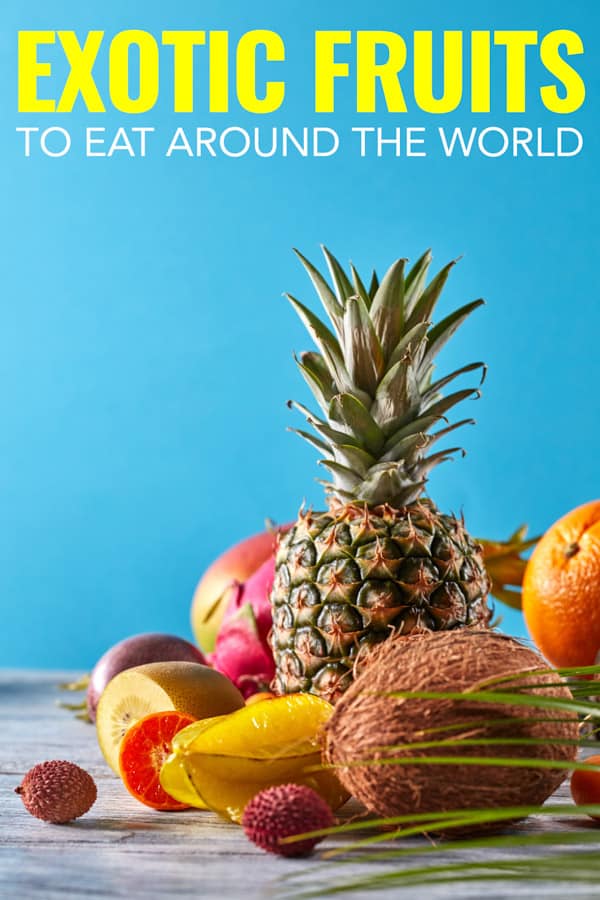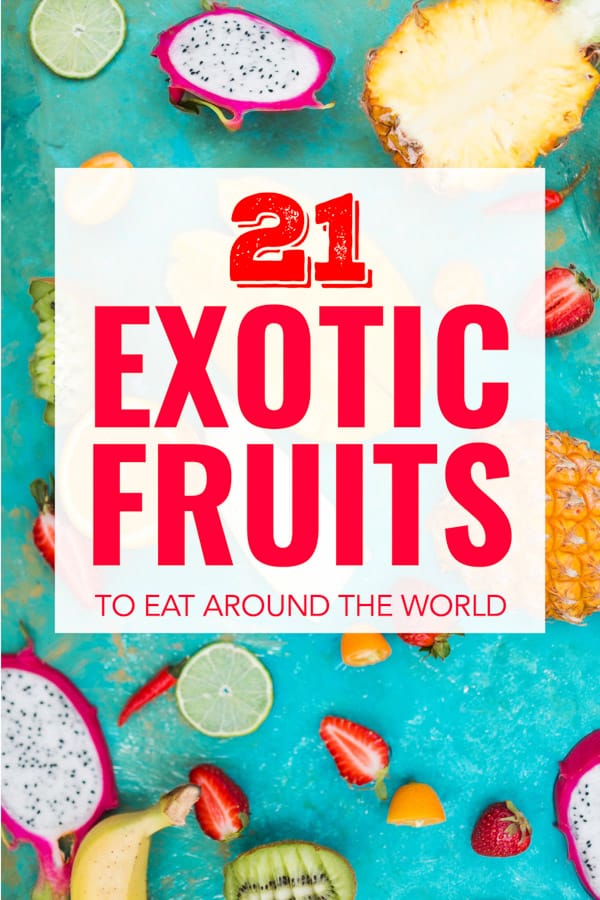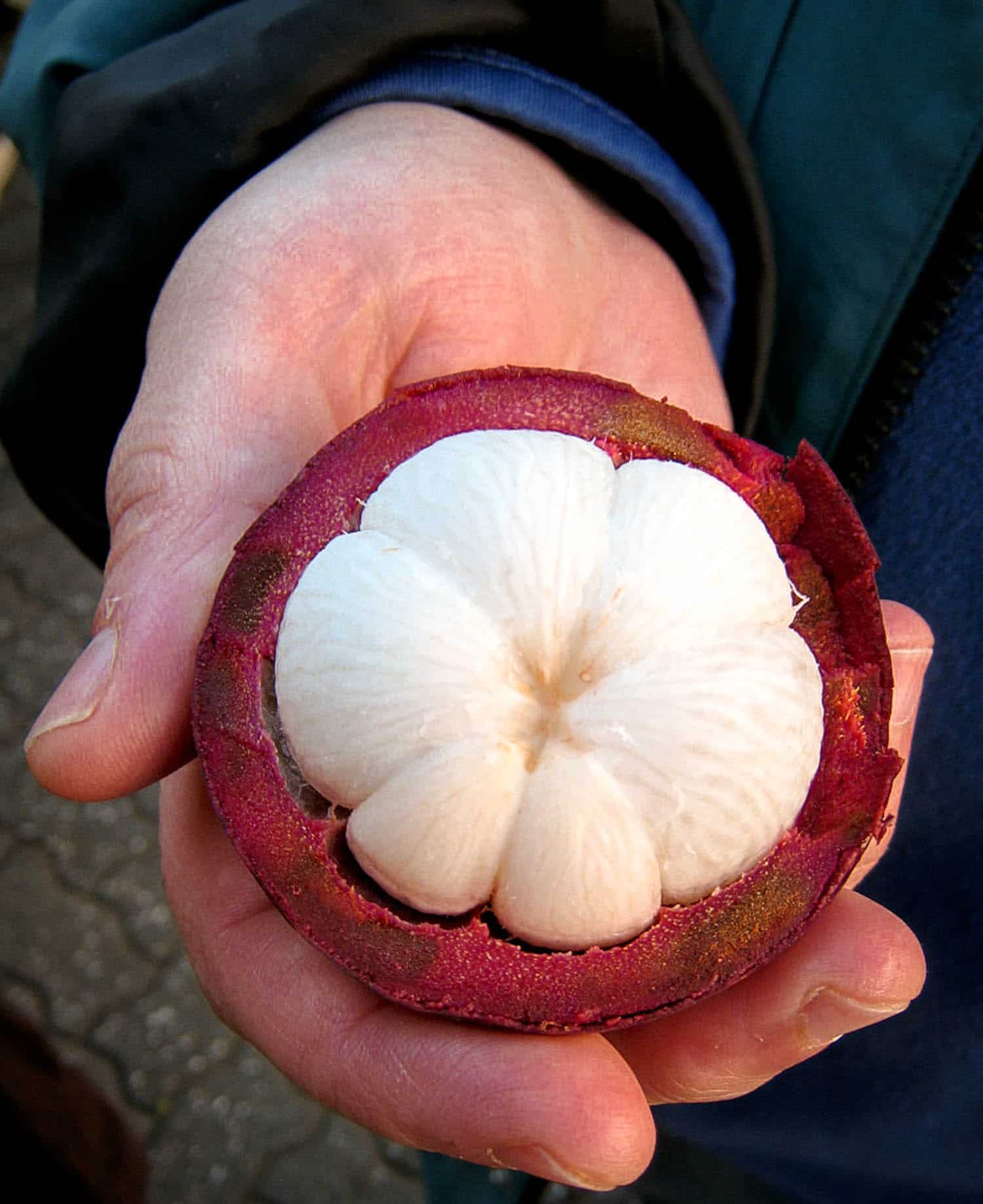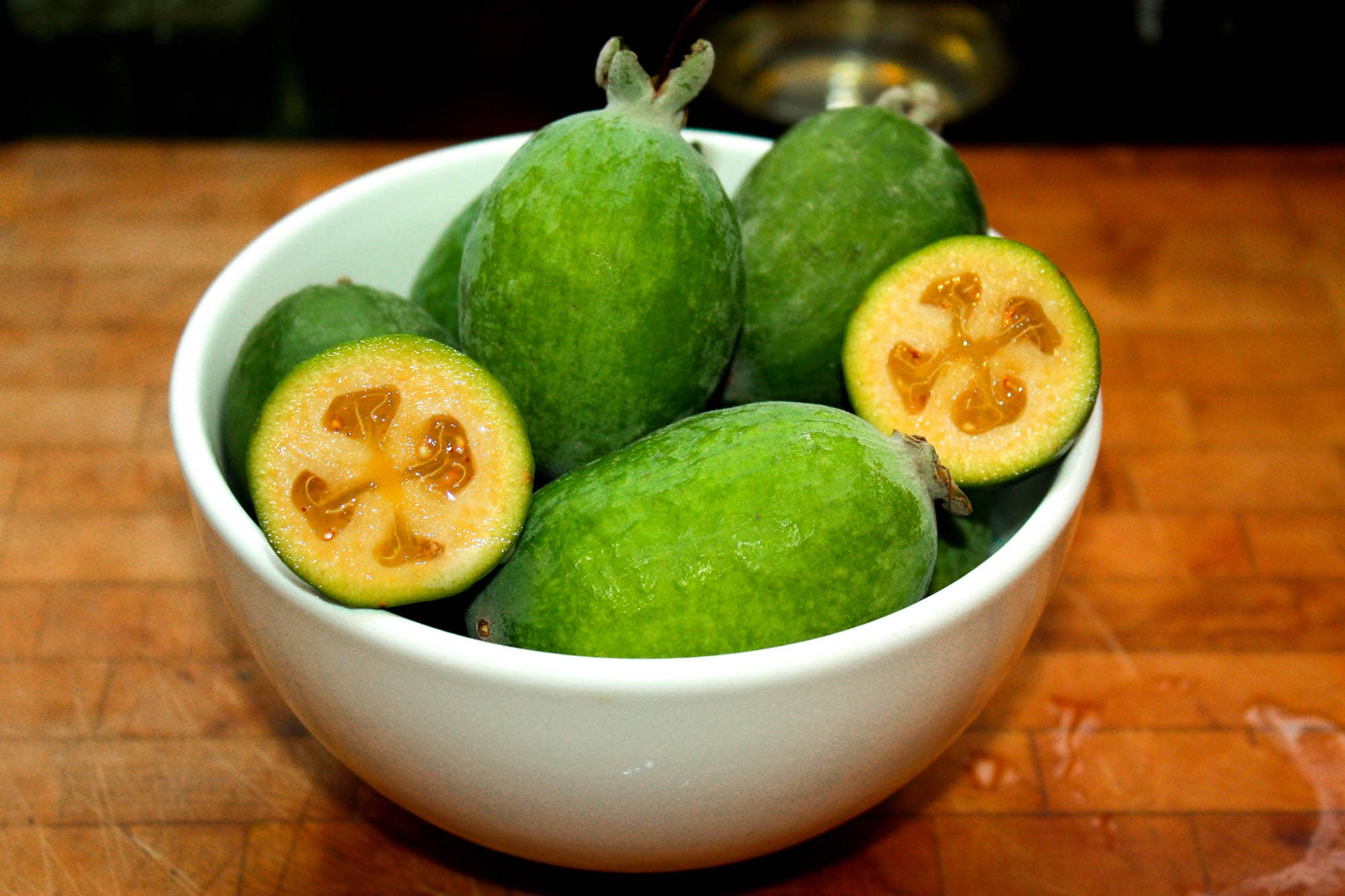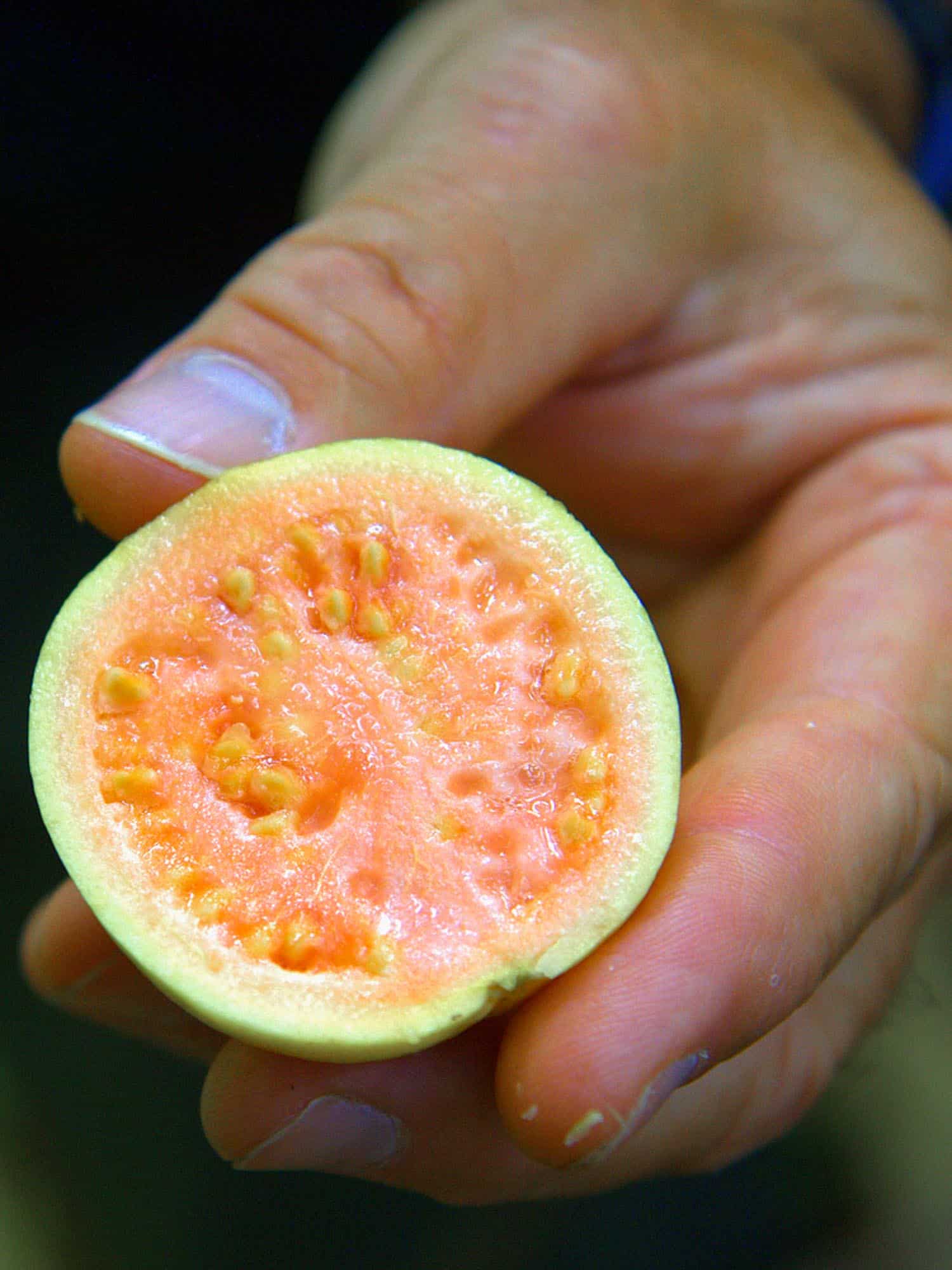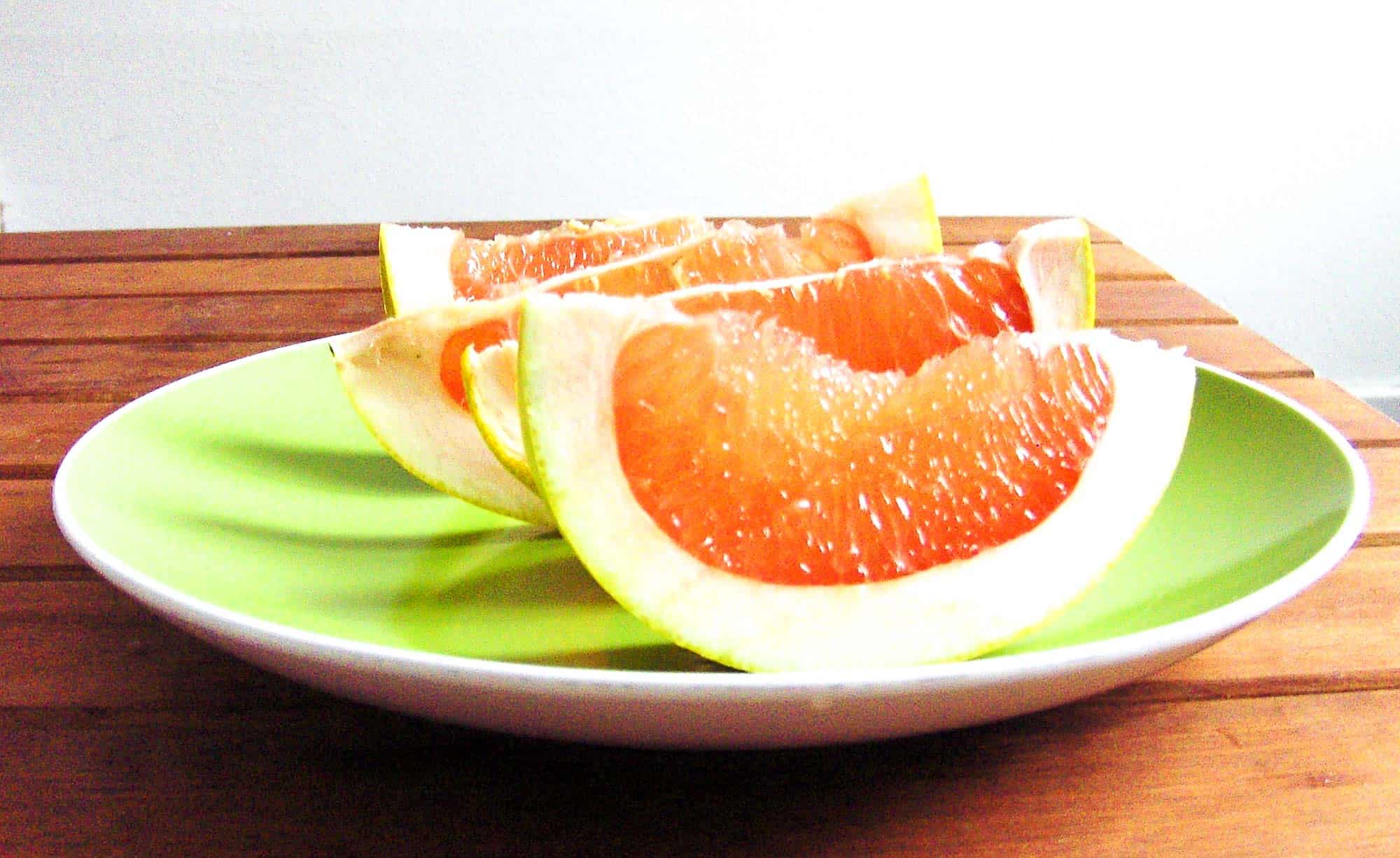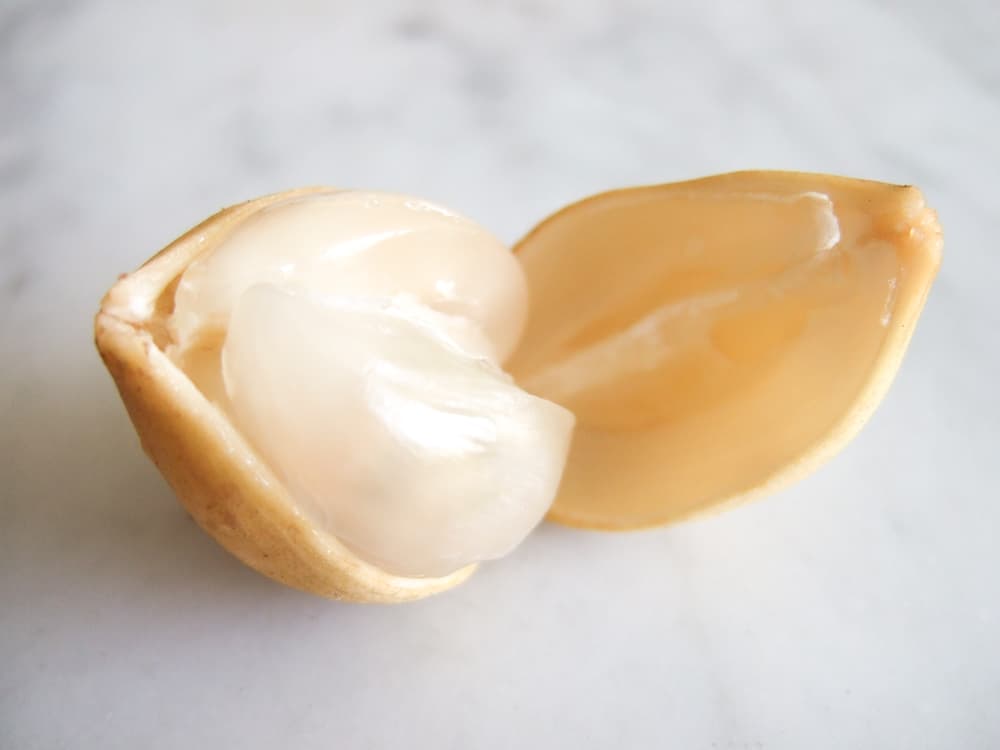One of the best things about eating abroad is discovering the delicious exotic fruits around the world.
Even something as simple as a banana tastes quite different when eaten from a tree rather than when it has ripened in our home.
As a child in small town Canada the most exotic fruit I encountered as a child was in a canned fruit cocktail that local grocery stores carried.
When I lived in the Philippines I couldn’t believe how many unusual fruits I had never even heard of in South East Asia.
But many tropical fruits became my favourite Filipino foods.
Then I traveled from Mexico through Argentina and saw so many more citrus fruits and other delicious things that are from Latin America.
And just in the last year I discovered new fruits in Barbados and Jamaica that were originally from Western Africa.
Exotic Fruits Around the World
I haven’t enjoyed them all. I did not include dragonfruit on this list. It may be one of the most beautiful but definitely not one of the tastiest.
Stinky durian tastes a bit like blue cheese or smelly feet but I kinda dig it.
But I have loved the opportunity to try each and every fruit. Today heading to fruit stalls in markets is the first thing I do in another country.
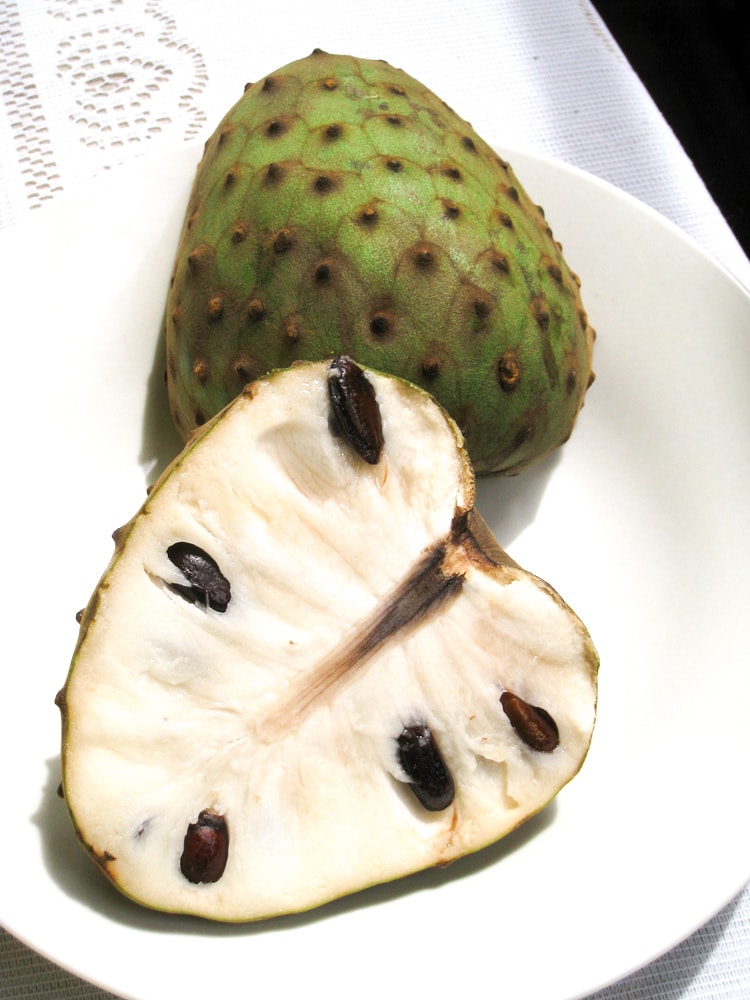
Cherimoya
Mark Twain once said the cherimoya was “the most delicious fruit known to man.” They are about the size of a grapefruit but are often called a custard apple because of its texture.
However the taste is tropical, somewhat between a pineapple and a banana. Both the seeds and skin are toxic so it must be peeled.
Although the cherimoya is native to the Andes in South America, you can now find the fruit in Sri Lanka, South East Asia, Hawaii, Southern Europe and parts of Africa.
And while many people think that cherimoya and soursop are the same plant.
They aren’t quite. They are more like siblings, while the flavour is similar cherimoya is annona chermola and soursop is annona muricata.
There are many health benefits of cherimoya, they are high in fibre, iron, potassium, vitamin C and b vitamins.
They also have cytotoxins many people believe combat everything from malaria to cancer.
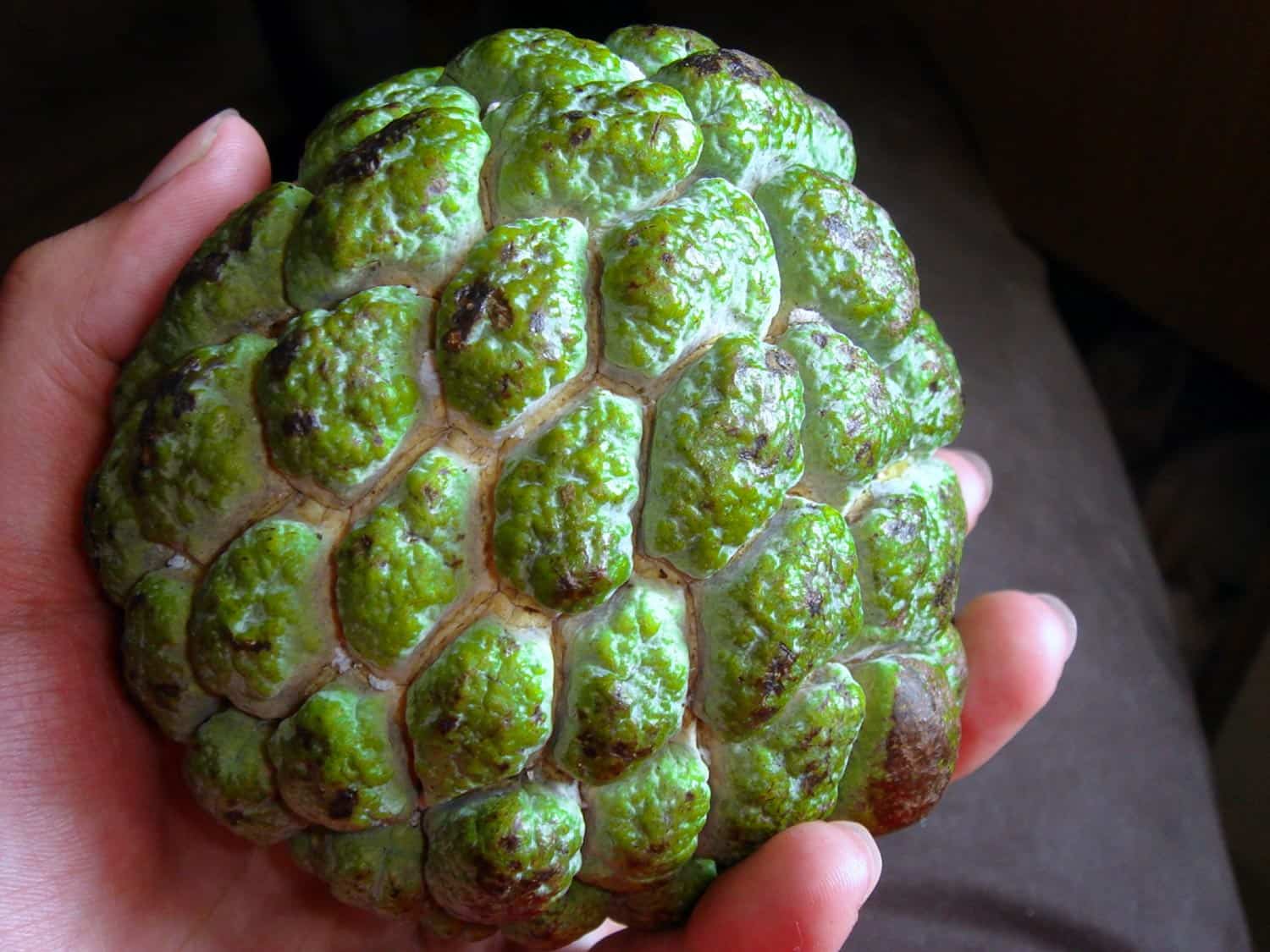
Sweetsop
The sweetsop is a round or heart-shaped fruit that looks like the knobbly cousin of the cherimoya and that’s because it is, and it’s also sometimes called a sugar apple.
To make things more confusing the sweetsop is also related to the soursop. Yet it doesn’t have the spiked edges of the soursop, is smaller and also sweeter with a custard-like texture.
It’s often eaten on its own, blended into juice or made into ice cream.
Like the cherimoya, it is originally from the West Indies and the tropical areas of South America.
The tree-grown fruit have been exported to many other tropical areas.
Sweetsop is considered highly medicinal and a source of potassium, magnesium, iron, riboflavin, B vitamins and vitamin c.
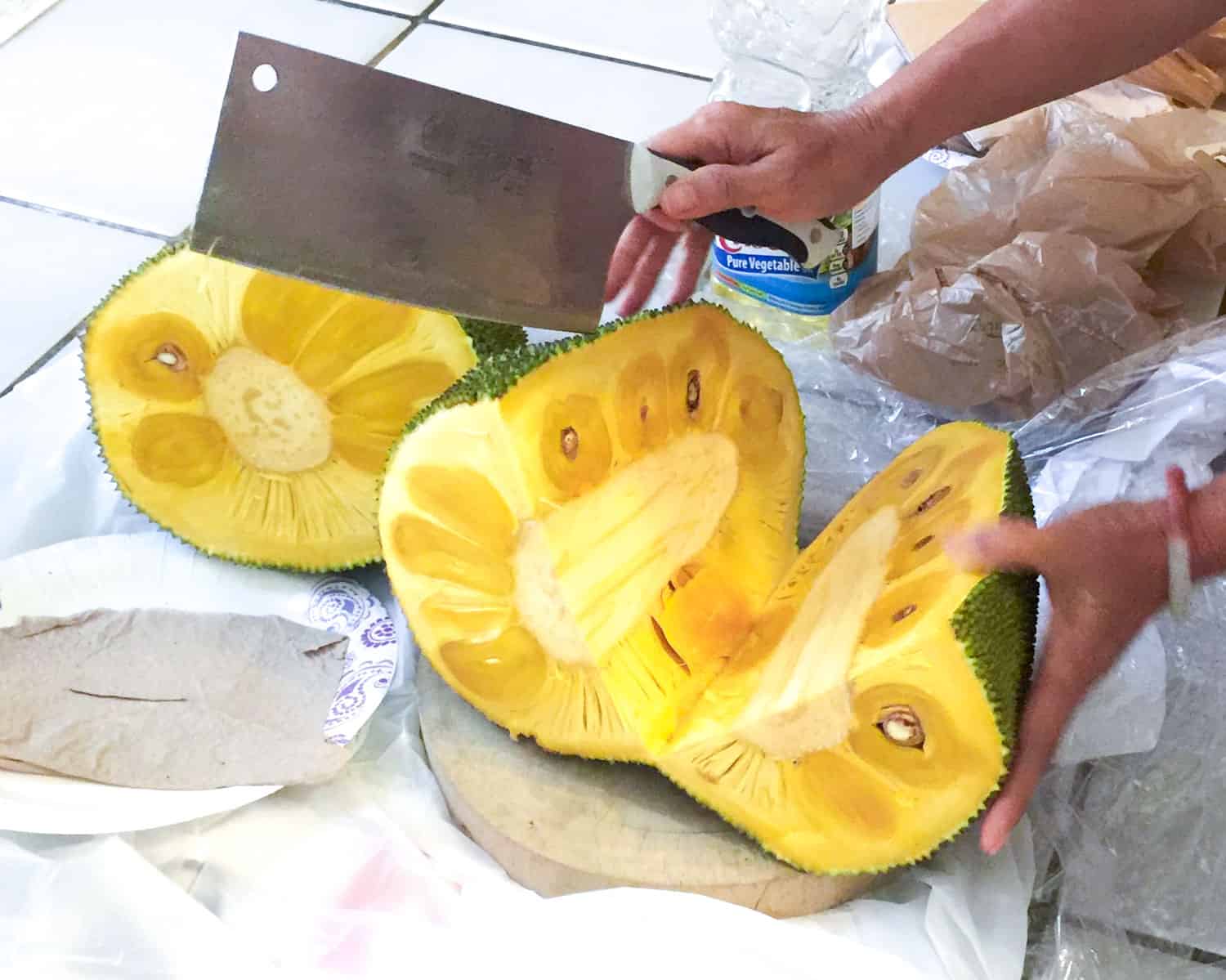
Jackfruit
Growing in South and Southeast Asia, the jackfruit originated in the rainforest and is the largest tree growing fruit in the region.
It’s part of the same family as the fig and breadfruit.
It has a a mild fruity flavour, while the starchy flesh has played an important part in the diet of the region for centuries.
Jackfruit is becoming very popular in North America with the prevalence of more vegan and vegetarian restaurants.
Jackfruit is well known as a great vegan substitute for pulled pork tacos and sandwiches.
But buying a whole, fresh jackfruit may be intimidating as it is a large fruit so it’s often sold quartered or halved.
The average jackfruit weighs between 10-20 pounds but it’s possible to find them up to a whopping 100 lbs and three feet long.
Don’t fret, in major cities it’s also possible to buy jackfruit canned or frozen.
Jackfruit is a great substitute for people who want the benefits of a low glycemic food.
It has a mild flavour, similar to a potato and it’s so starchy it can often replace potato in dishes.
Jackfruit is a source of protein, vitamin A, fiber, copper, manganese and other nutrients. The seeds are edible and are very nutritious.
It’s found all around the world and is a common Thai fruit.
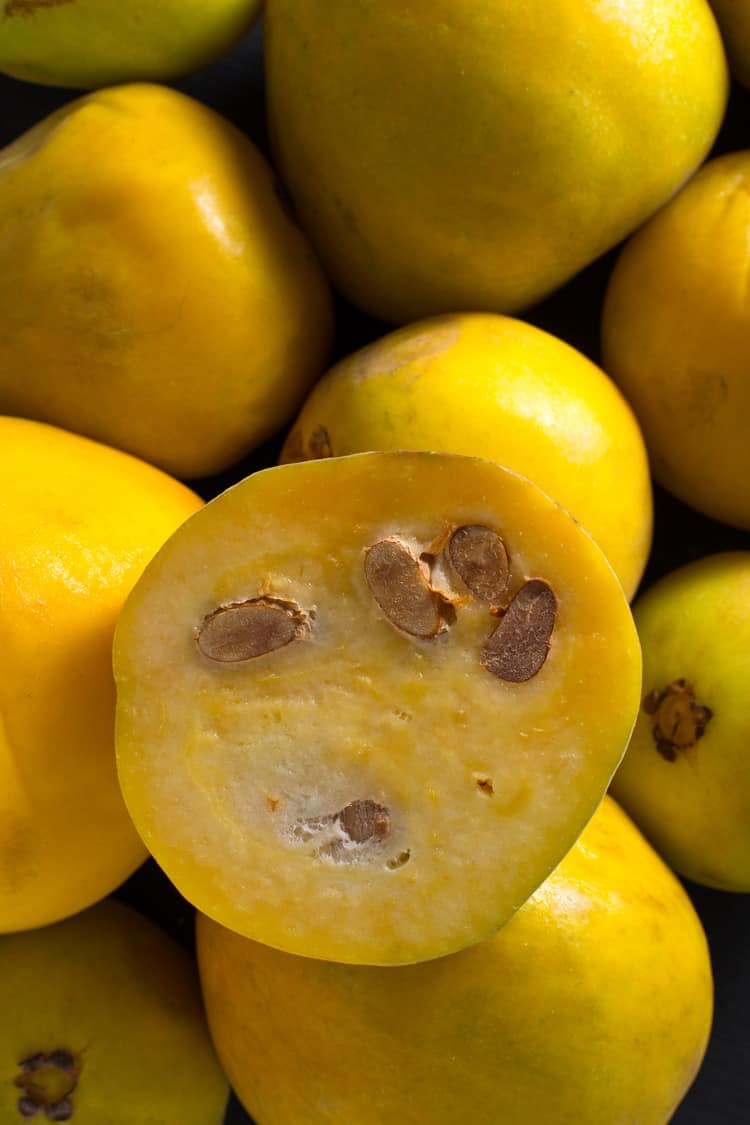
Araza
One of the more remote exotic fruits, Araza is native to the Amazon jungle in Brazil, Peru and Ecuador.
This tree fruit is also known as the Amazon guava and has the high acidity of some citrus fruit.
It is often too acidic to eat on its own and its tart flavour is more popular when blended to make juice, ice cream and smoothies.
Araza is one of the few unusual fruits in the world that haven’t been taken and replanted elsewhere.
It is not yet a commercial crop. And this is a shame because some research shows its nutrients could prevent cancer and control blood pressure.
It also has high levels of nitrogen and potassium.
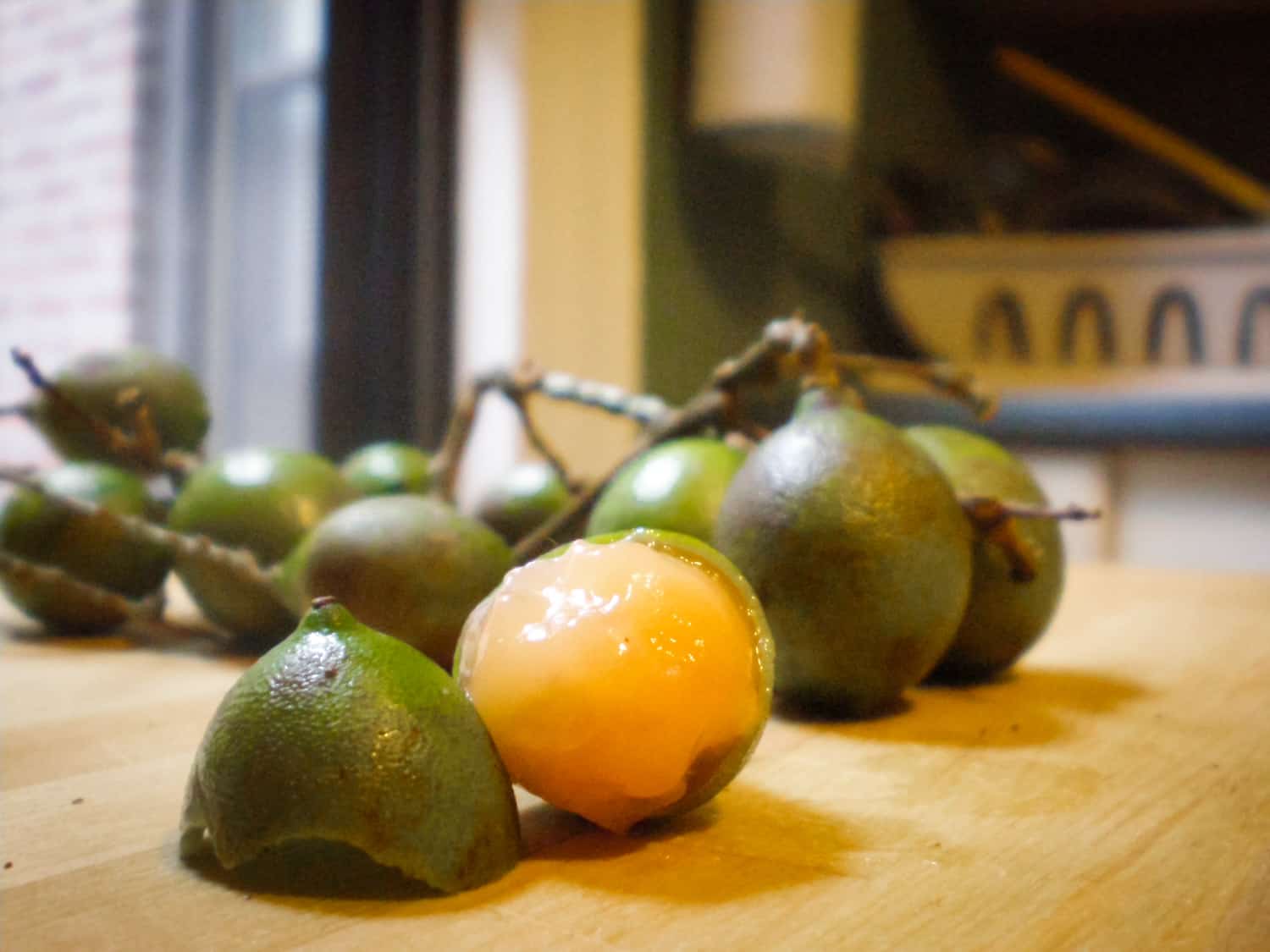
Spanish Lime
To call this a lime is quite misleading as it doesn’t eat like any limes we would traditionally know. It has a gelatinous interior similar to the rambutan the chom chom fruit.
Growing throughout the Caribbean and in many parts of South America, these fruit trees grow up to 25 meters in height in dry forests.
Americans called Spanish lime because they look like small unripe limes, about the size of a ping pong ball.
Also, the flavour is often described as a mix of lime and lychee.
In many other countries, particularly Latin America it’s more common to find them as mamoncillo (Cuban fruit), limoncillo, ganepas or quenepas (Puerto Rico).
In addition to being a good source of fibre, phosphorous and calcium, they also contain tryptophan, which we most often associate with turkey dinner, but it helps produce serotonin and eases anxiety.
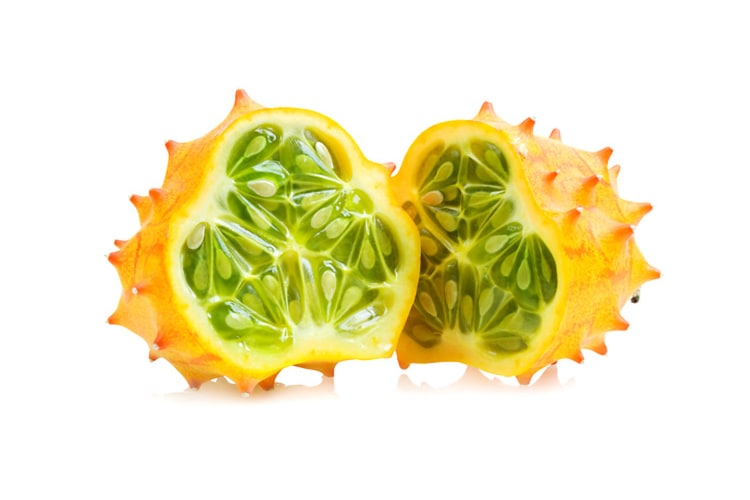
African Horned Cucumber
Some people think this is a weird fruit to eat as it’s so different from what they know.
The distinctive spiky skin of the fruit is what gives it its name. And the green flesh has a tart flavour with a jelly like texture.
But don’t be afraid of the slimey texture, if you can eat passion fruit or pomegranate you’ll be fine.
This member of the cucumber and melon family from Sub-Saharan Africa. Today it also grows in California, Australia and New Zealand.
It is also known as the kiwano (New Zealand), blowfish fruit, melano (Israel) and hedged gourd.
Its taste is as complicated as you could expect – a mix of kiwi, cucumber and banana and citrus.
The African horned melon is high in vitamin A, vitamin E, fibre, zinc and minerals. Some swear it helps in anti-aging as well as digestion.
It also happens to be inexpensive so if you’re traveling New Zealand on a budget it’s a great way to try the local flavour.
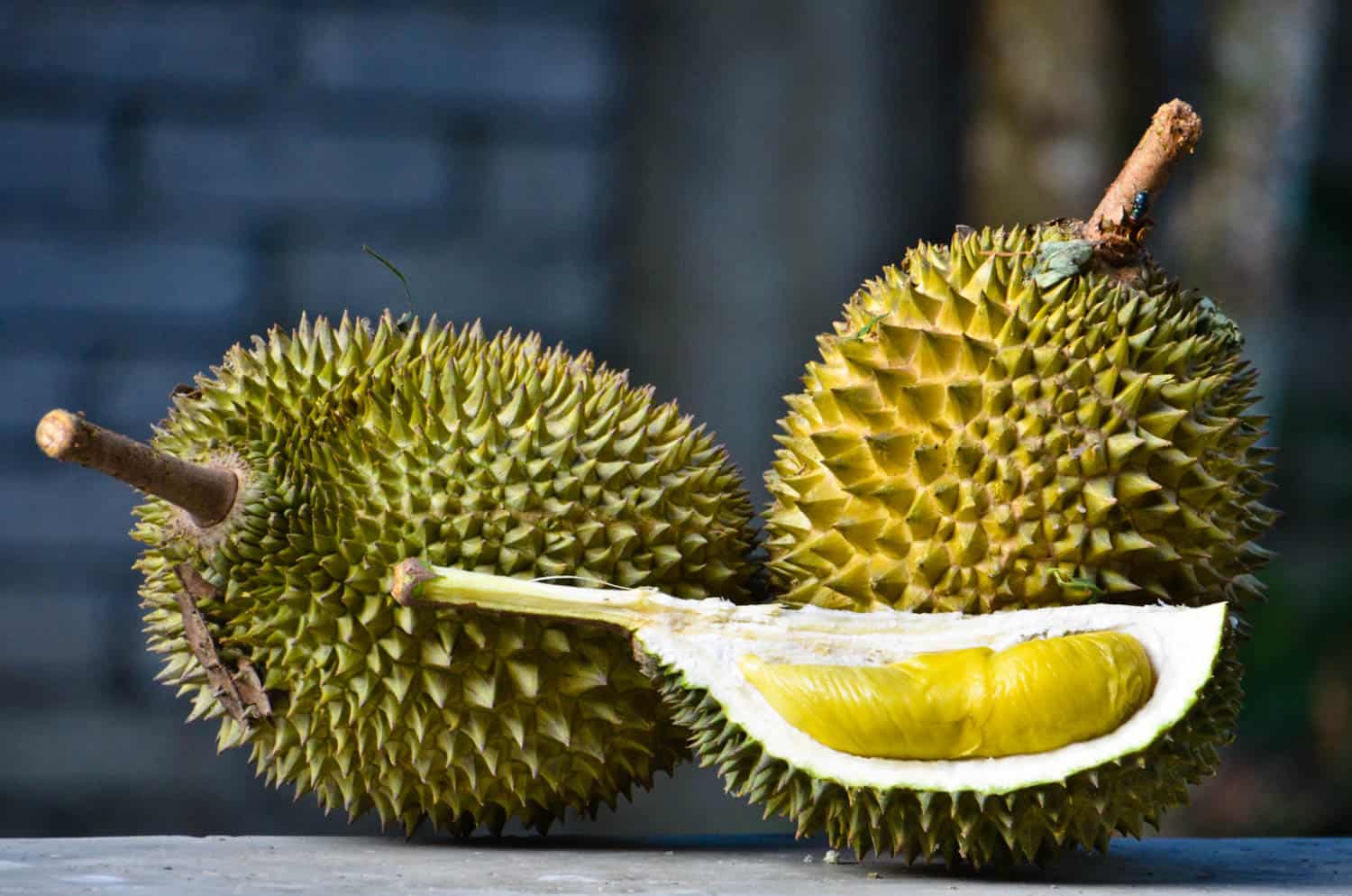
Durian
Durian must be one of the most notorious exotic fruits in all the world. It is famous throughout Southeast Asia for its strong smell.
In fact, it’s so strong there are often signs that you cannot bring durian into public places and transportation – no shirt, no shoes…if you have durian…no service.
Known as the king of fruits, the most common durian has a green exterior with a yellow interior and an almond custard flavour, it’s also possible to find both red and orange durian.
The health benefits and risks of durian are widely misunderstood. Many people falsely believe it’s a source of bad cholesterol or will make you gain weight.
However, the plant is loaded with vitamin C, potassium, iron and so much fibre that a small one has the recommended daily intake.
On the flip side, some people eat too much and end up in the hospital. It’s all about moderation.
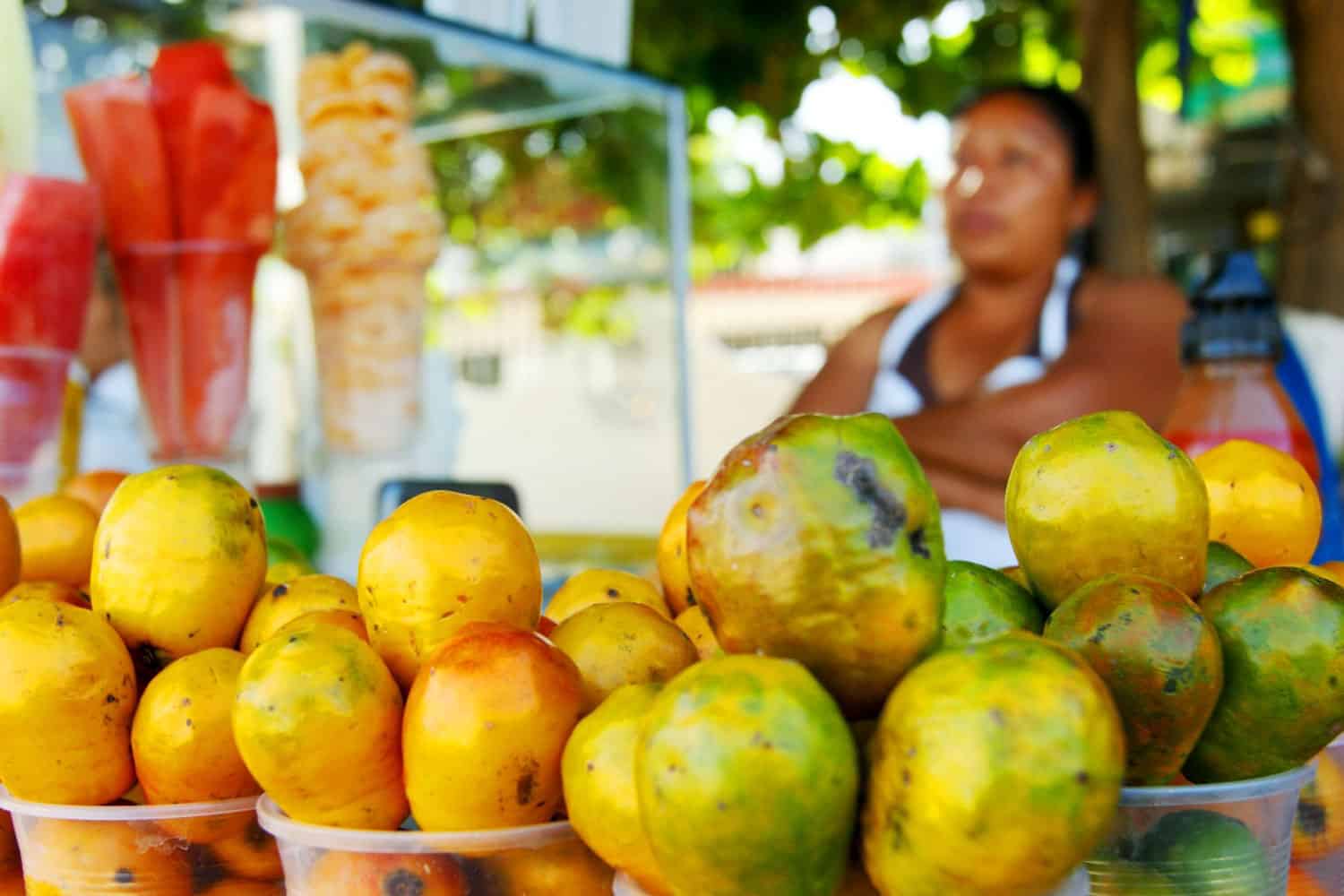
Ciruela
The name ciruela is somewhat misleading as it directly translates in English as plum.
But it isn’t exactly a plum as we know it so we translate it to Spanish plum. It is actually in the cashew fruit family.
Also known as jocote or hog plums, ciruela are about the size of a kiwi. Thave a very sweet flesh when ripe and taste similar to a nectarine with mango or citrus.
But it is also common to eat this exotic fruit raw with a bit of sea salt in Ecuador.
Originally found in Mexico and as far south as Brasil, jocote fruits are now grown in many places including the Philippines and Nigeria.
Ciruela is known to help with digestion and help acid reflux amongst other ailments. It is high in fibre and vitamin C as well as other antioxidants.
Mangosteen
Distinctive tree-growing purple fruit, the mangosteen originated in Indonesia, but is now grown in many tropical areas such as Central and South America. It’s very popular in Jamaica.
The white creamy flesh of the fruit is both tart and sweet. Its taste is cross between a peach and a tangerine. The vibrant the purple skin is inedible.
27 Costa Rican Fruit You Need in Your Life
Over the years mangosteen has been used to treat everything from tuberculosis, to cancer and thrush.
Some swear applying it directly to the skin helps eczema. Although none of this is proven.
Mangosteen is common in jams and other preserves and it’s possible to find it canned.
It is rich in vitamin b and C, fibre, iron, riboflavin and manganese.
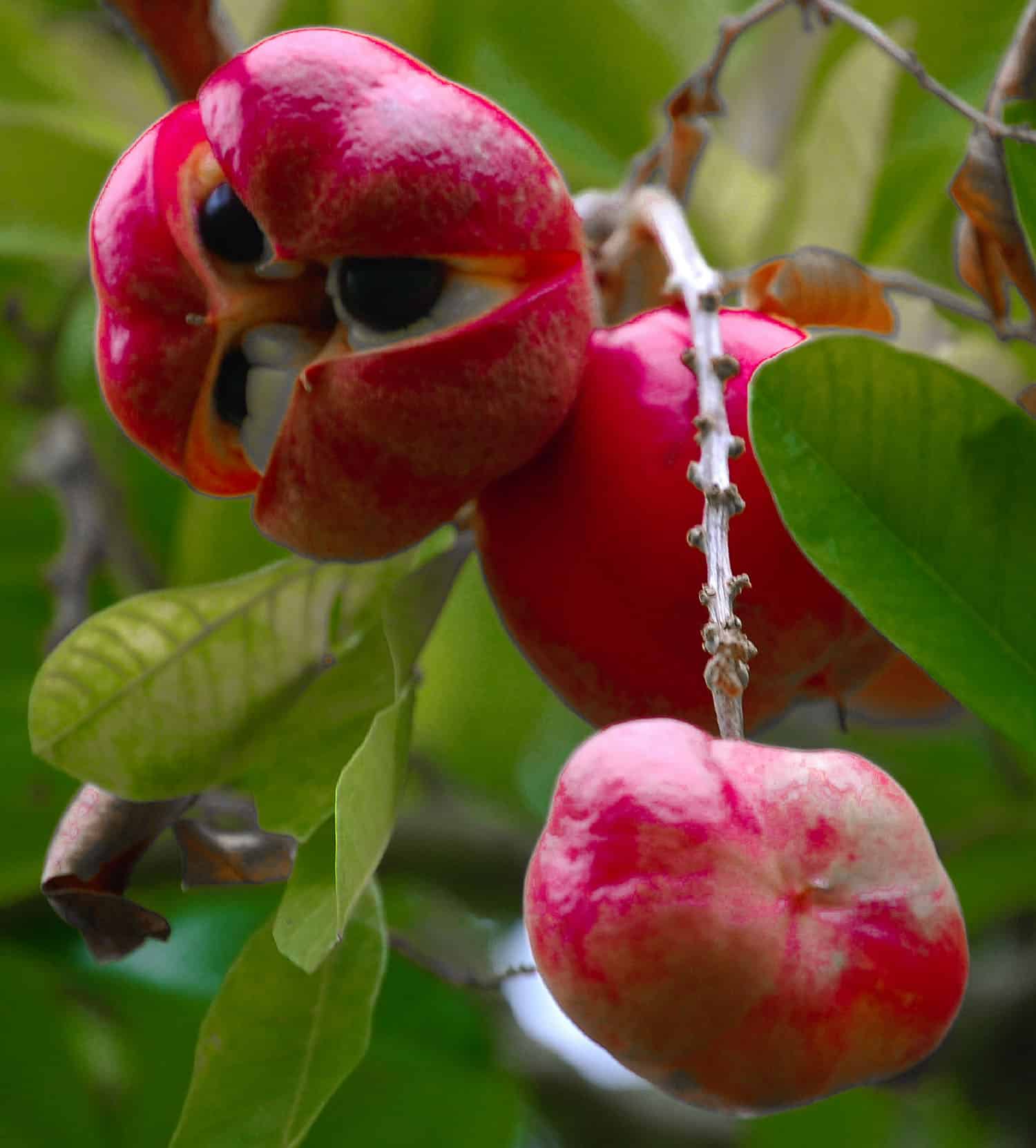
Ackee
Native to many countries in West Africa, the ackee is now grown in the Caribbean.
It is synonymous with Jamaican cuisine and is one of the most traditional foods.
In fact ackee is the national fruit of Jamaica and it is in their national dish – ackee and salt fish.
27 Jamaican Foods to Try
The ackee tree is evergreen, the fruits has skin that is hearty like a pepper. Part of the lychee family, you can tell when the ackee fruit is ripe because the fruit will split to reveal the seeds and flesh.
It is important to eat it only when ripe as it is one of the exotic fruits that can be toxic otherwise.
Although ackee is a fruit, it is treated as a vegetable and cooked in dishes.
Sometimes also called achee, ackee apple or ayee, it is one of the most unique exotic fruits to eat as it’s not found everywhere.
In the United States it’s only possible to buy canned or frozen ackee due to its toxicity, which causes what has been named Jamaican vomiting sickness .
The taste is similar to hearts of palm and it is quite healthy with high protein, vitamin B and C, fibre, calcium and zinc.
Feijoa
Growing on shrubs in the highlands of South America, these small fruits ripen in the fall, and have a sweet flavor compared to apples or pineapples.
Feijoa are also known as guavasteen and pineapple guava, the texture is gritty like a pear but the flabour is more like a vombed. pineapple, guava and strawberry.
While they are native to South America, they are now grown throughout the world and are very popular in Iran, Russia and New Zealand.
While the most common way to eat feijoa is raw, the skin should be peeled as it is bitter. Or cut them in half and scoop out the flesh as you would a kiwi.
Feijoa are very high in vitamin C, B vitamins, fibre, iron and minerals.
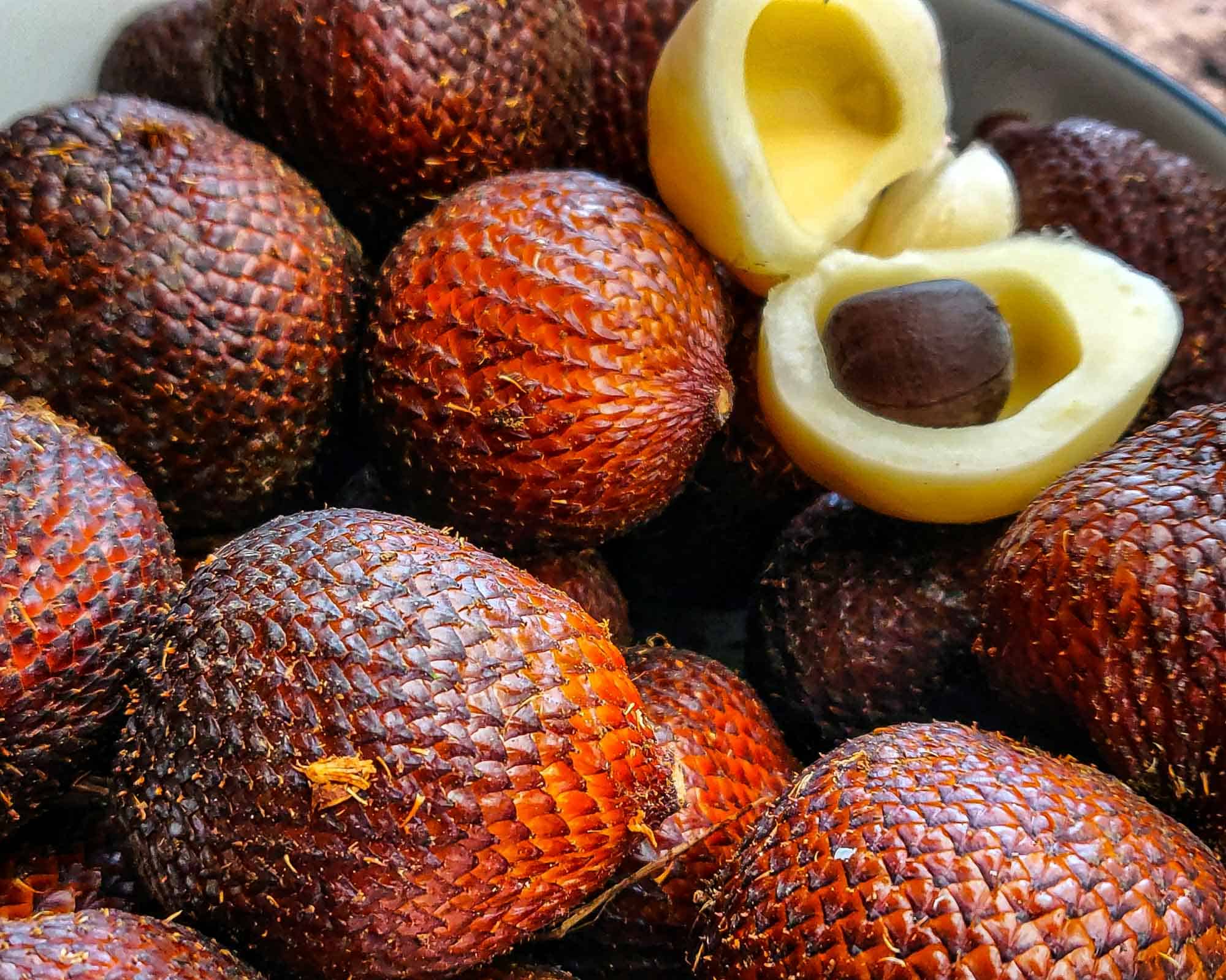
Snake Fruit
Also known as salak, this fruit is native to the Java and Sumatra regions of Indonesia.
However, it’s common throughout South East Asia, and is a common street food snack where vendors will peel the skin and serve in small plastic bags.
It is named for the distinctive colourful scales on the skin that are also quite prickly like a cactus.
The texture of the flesh is similar to a firm apple with a sweet flavour that is slightly acidic.
Snake fruit is a good source of protein, fibre, vitamin C and phosphorus. It also is one of the exotic fruits with a high amount of beta-carotene, much more than found in guava, mango or watermelon.
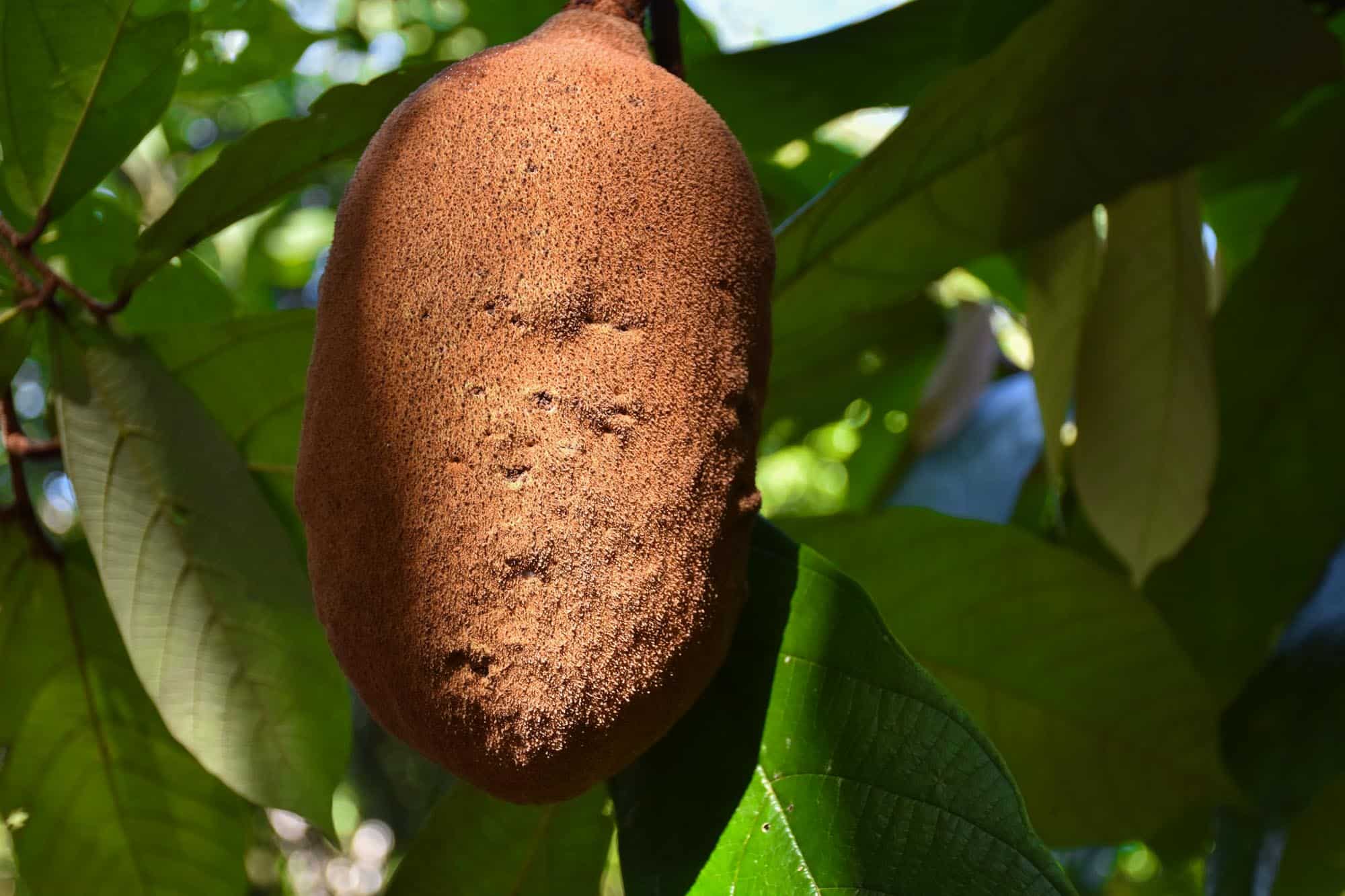
Cupuacu
These tree grown exotic fruits are related to cocoa, and beneath the brown skin is a white creamy flesh that has been compared to a blend of chocolate and pineapple.
However the taste of cupuacu is hard to compare to any other fruits, it is sweet and tart at the same time like pineapple and mango mixed with pear and banana. It’s a fruit up on it’s own!
Cupuacu is Brazil’s national fruit. It is found in the Amazon jungle areas of Brazil and Peru, along with Colombia and Bolivia.
While it’s common in juices and desserts, but it’s also used in ice cream and body lotion.
With its health benefits, many believe it will be even bigger than the acai fruit for its phytonutrient polyphenols, B vitamins, and flavanoids.
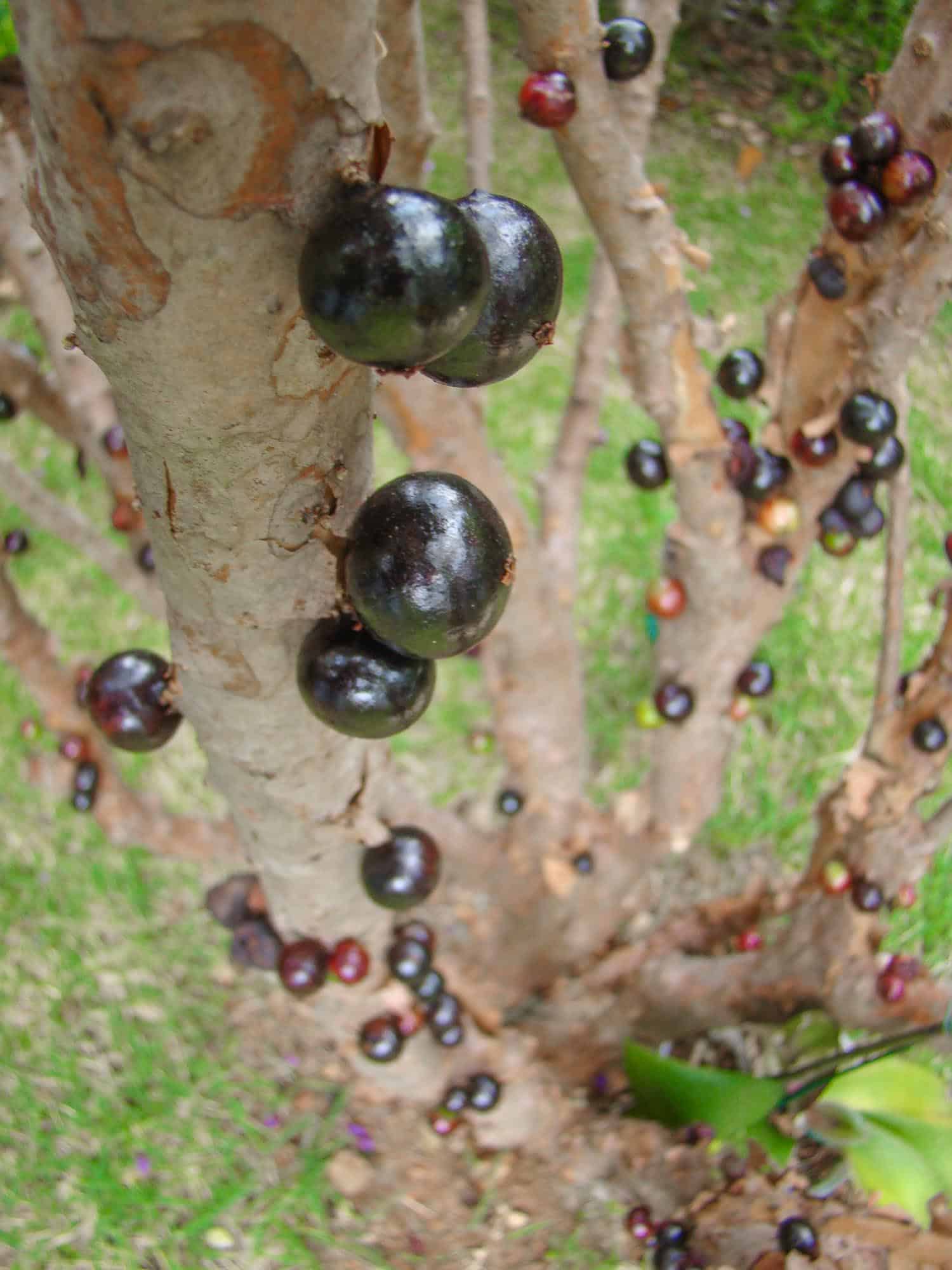
Jabuticaba
One of the more usual exotic fruits, it grows in clusters but rather than hanging from the branches. It grows in cluster on the bark. In peak season the bark is completely covered with clusters of jabuticabas.
While the fruit has a purple grape-like skin, inside jabuticabas are have a white gelatinous flesh.
Like grapes, this fruit is often eaten raw, preserved to make jam, or fermented to make wine or other alcohol.
It is high in calcium, phosphorous, vitamin C and B vitamins. Studies show that the fruit may also have cancer fighting properties.
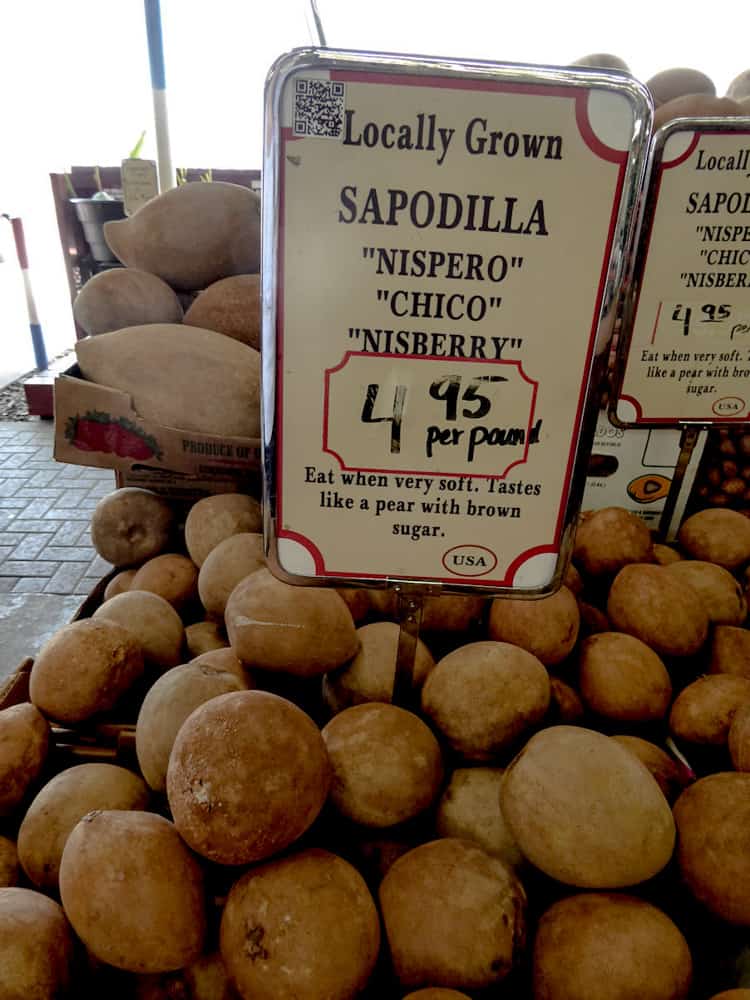
Naseberry
Also known as the sapodilla or chikoo, this fruit is grown in Mexico, Central America and the Caribbean.
This fruit is actually a large berry. It softens significantly when ripe and has a malty, sweet flavor, with a small seed within.
In Mexico it’s called a chico zapote, and it looks more like a potato than a fruit or a berry.
I ate it in Oaxaca and was shocked at the spiced flavour similar to nutmeg, cinnamon and allspice. It’s like nothing I’ve ever had.
Naseberries are high in fibre, vitamin A and C and is a good source of copper, potassium and iron.
It’s also traveled to South East Asia and is a popular Cambodian fruit.
Guava
Originating in Latin America, the guava fruit is now grown all over the world and has several colours.
The taste of guava also varies depending on how ripe it is and what kind it is. Guavas can be as sweet as a pear and strawberry or more tart like a pear and grapefruit.
Guava is very common in juices, hot sauces, candies and in many Cuban desserts and pastries.
Although guava are small, they are high in fibre, folic acid and have four times as much vitamin C as an orange.
Pomelo
A citrus fruit sometimes called a Chinese grapefruit, the pomelo has a thick layer of pith that must be removed to reach the edible fruit.
They are large fruit that can weigh several pounds hanging from the tree.
And while it is native to Southeast Asia, it is another one of many exotic fruits brought to the Caribbean, where it was renamed shaddock, after the sea captain who brought it to Barbados.
23 of the Most Delicious Barbadian Dishes
If you’re like me and you find grapefruit far too bitter or sour to eat, pomelo is perfect for you.
It has all the flavour of a pomelo without needing to add 5 lbs of sugar to balance the flavour.
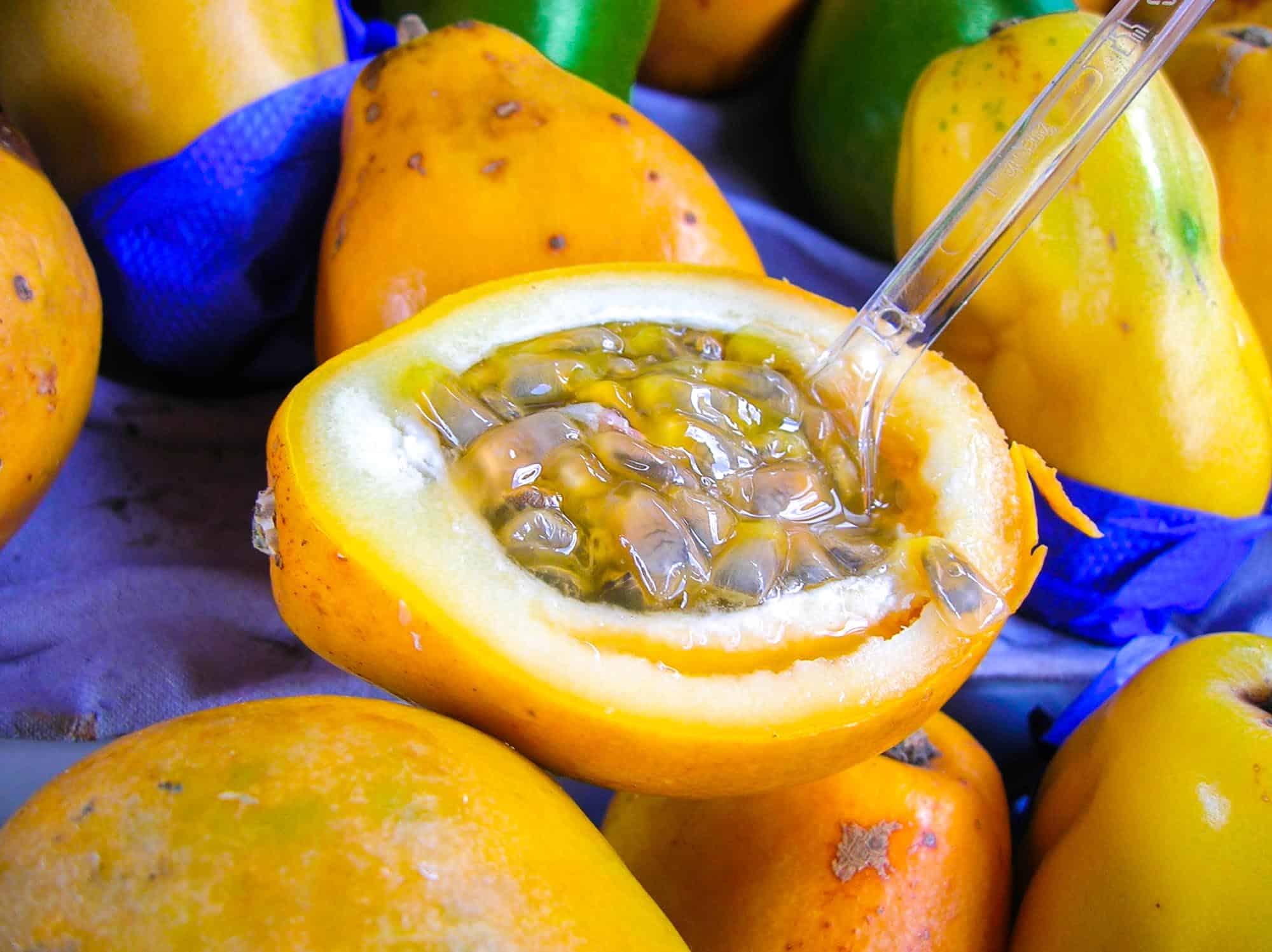
Passion Fruit
Originating in Brazil, Paraguay and Argentina, this exotic fruit is actually a very large berry that can either be purple or yellow.
Also known as the maracuja (Spanish) and lilikoi fruit in Hawaii, passionfruit is now cultivated around the world and used in everything from fruit juice to ice cream.
The fruits are small with a gelatinous seedly centre and are high in polyphenols, beta carotene and vitamin C.
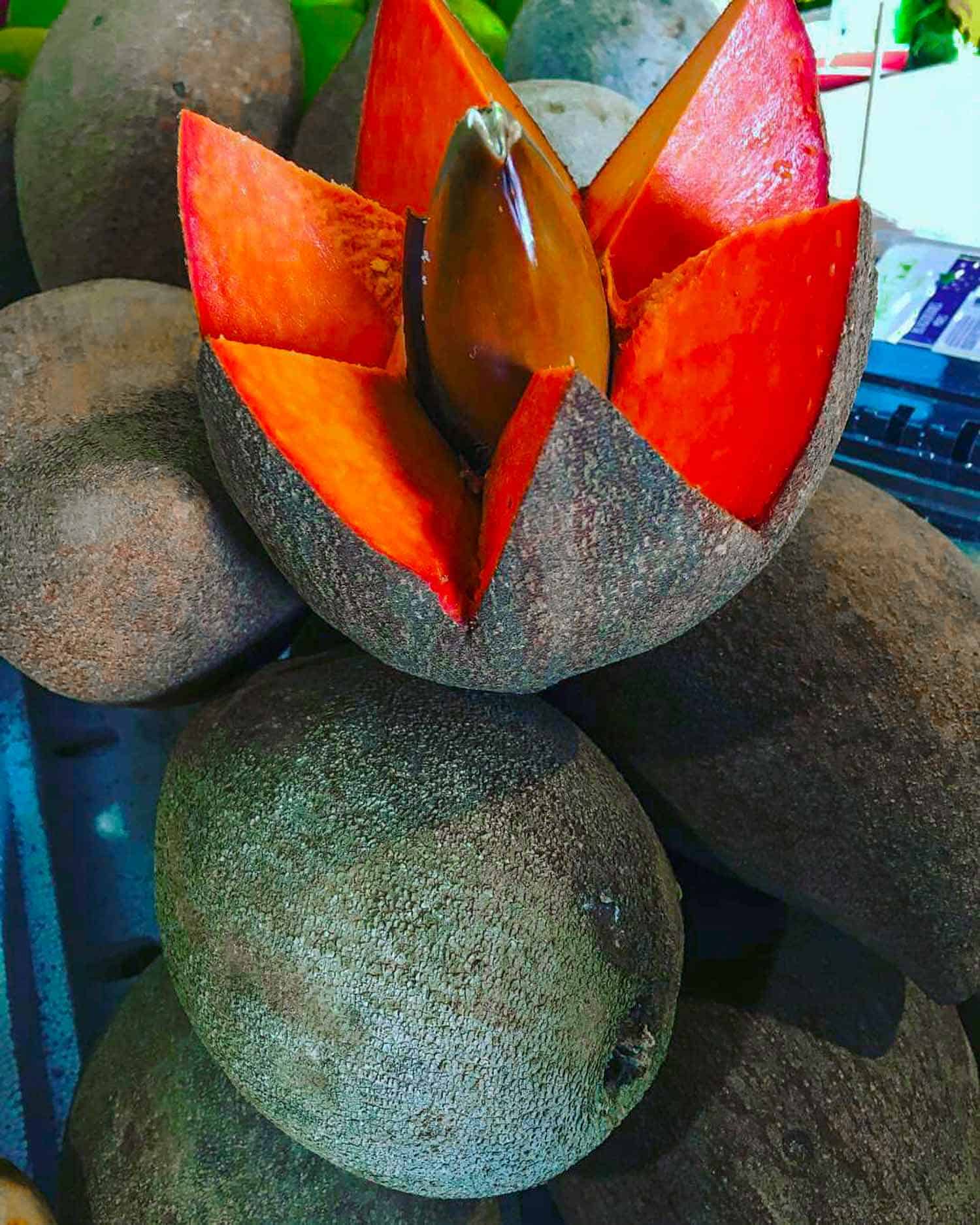
Mamey
Beneath the unattractive brown skin of this large berry, the flesh softens as it ripens, and is usually orange or yellow, with a large stone.
The fruit is originally from South America, but is very common in Central America, Mexico and Cuba.
>> ALSO READ: 30 Traditional Cuban Foods to Try <<
Like naseberry or chico sapote, mamey has a similar spiced flavour and is sometimes compared to sweet potato.
It is commonly eaten raw or used in smoothies, ice cream, jams and desserts.
Mamey is high in vitamin C and B6 and is a good source of many other vitamins, minerals and fibre.
Langsat
These trees are grown in Southeast Asia with small fruits that look like a small potato with a gel-like interior.
The langsat flower is the official flower of South Sumatra. The fruit’s flesh tastes sweet with a tangy edge, similar to combining a grape and a grapefruit.
If the fruit is not ripe the individual pieces are quite sour and sometimes bitter.
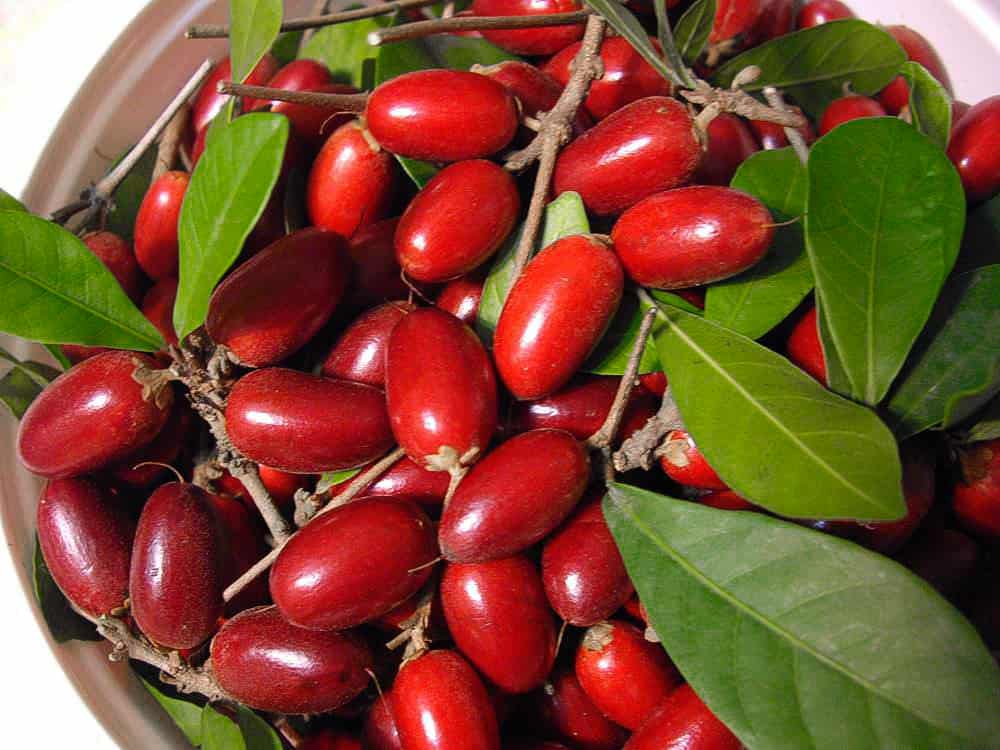
Miracle fruit
I tried miracle fruit, also known as miracle berry, a few years ago in Toronto. The reason this West African berry is called a miracle is that after having one you can eat an onion and it will taste like an apple.
It also makes sour foods, like lemons or grapefruits taste quite sweet due to the presence of miraculin.
It’s a fun party trick. It’s possible to get these exotic fruit frozen but they are quite expensive.
The miracle fruit actually has a mild, sweet flavour on its own with a hint of tang.
While it only has small traces of vitamin A and C, it is a great sweetener.
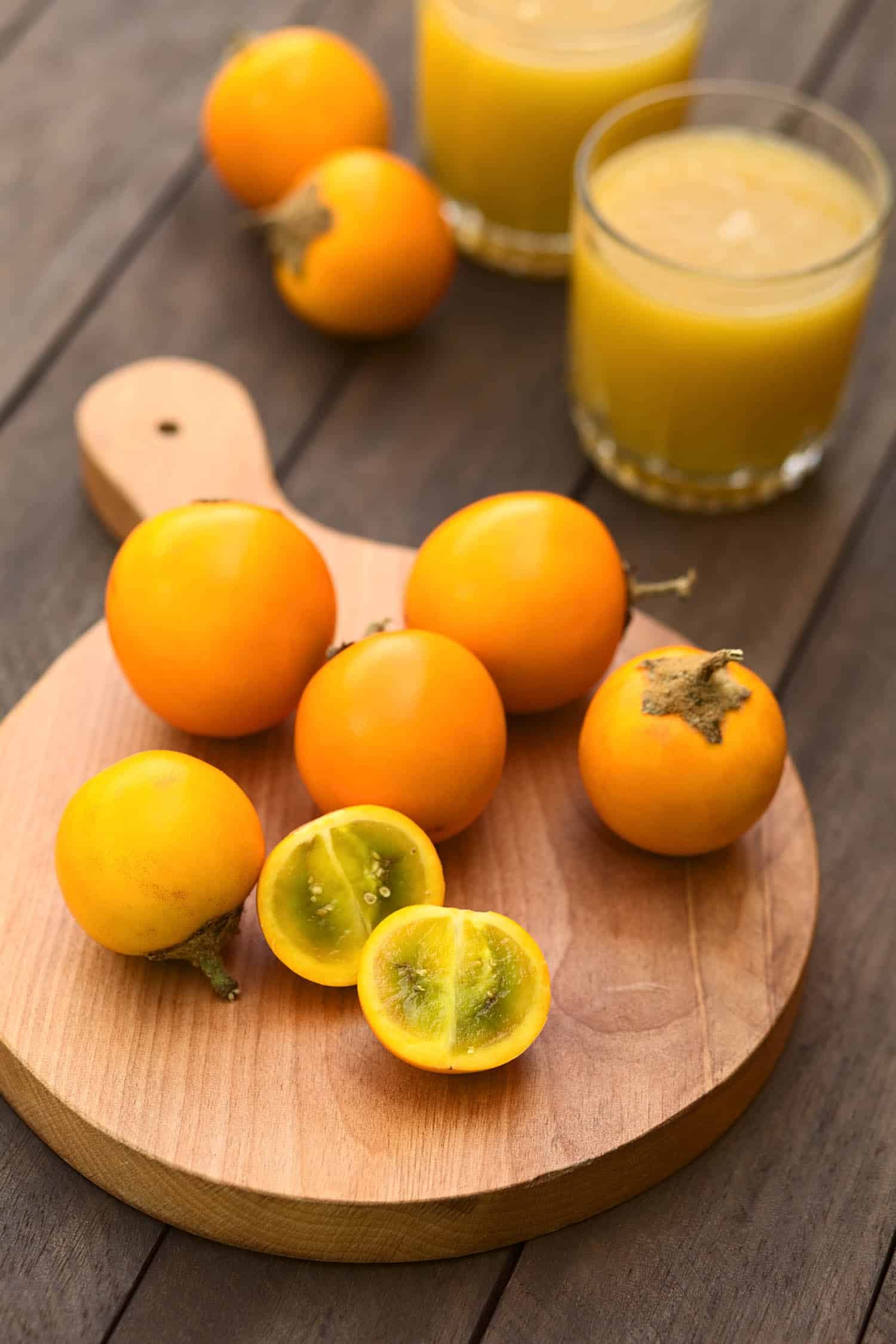
Lulo
This citrus fruit is also known as a naranjilla in some areas. It is grown in Ecuador, Panama and Colombia but there hasn’t been much success cultivating it in order areas of the world.
The lulo fruit have a citrus tang similar to rhubarb mixed with lime and grow best in partially shady areas.
When traveling in Colombia look for the fruit juice that is used in the lulada drink common in Colombia, which often includes a shot of vodka.
It is also turned into wine in Colombia and used for ice cream.
It is a nightshade fruit, so those who have allergies to nightshades (e.g. eggplant, tomatoes, gogi berries) should not eat them.
Lulo is high in vitamin A and C as well as potassium.
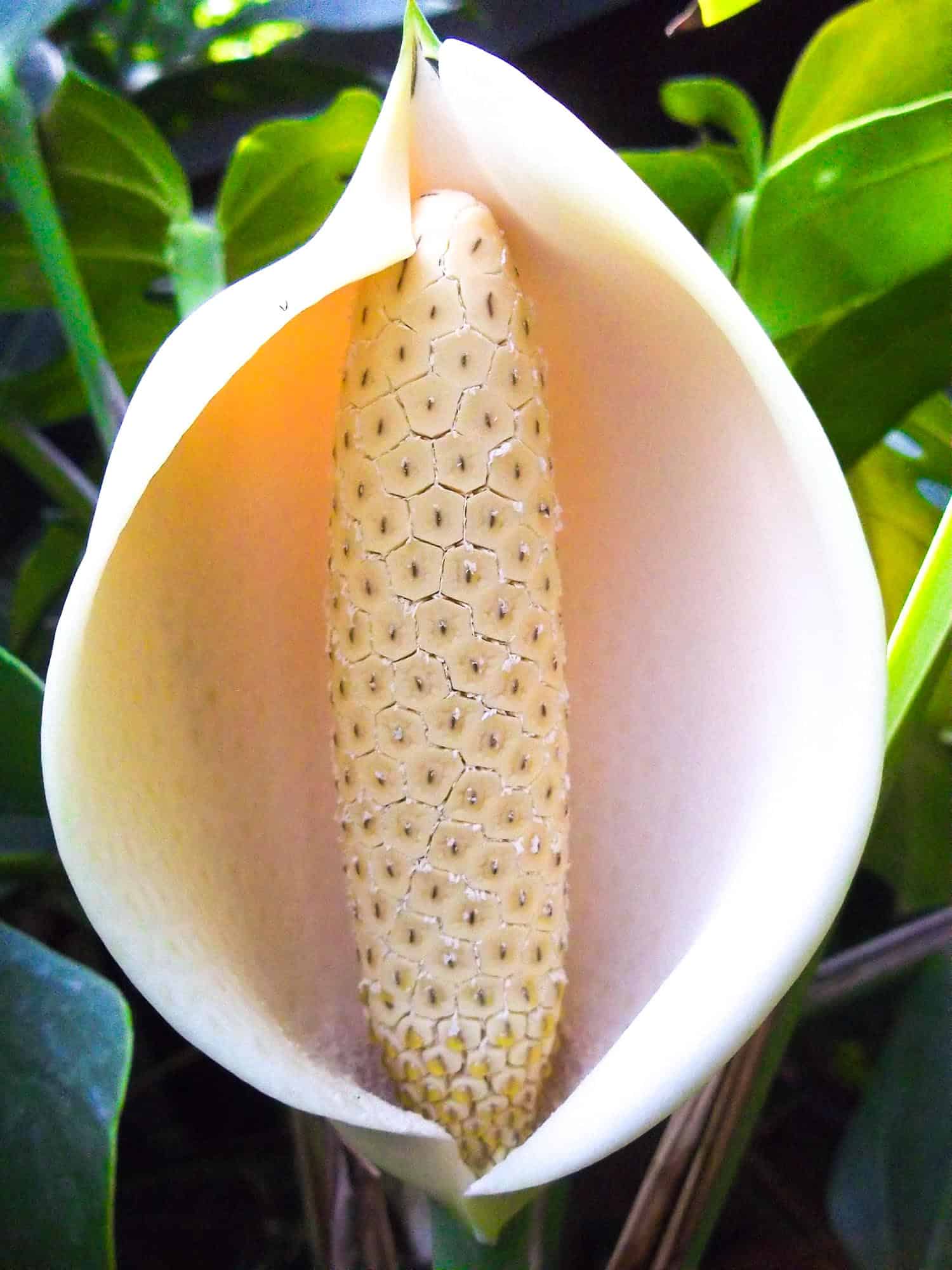
Monstera Deliciosa
Originally found in Mexico and Central America, this plant has become an invasive species in many tropical areas where it was introduced, including the Seychelles and Hawaii.
It’s a large monstrously delicious fruit that can be an irritant before it ripens. However, once fully ripens it has a taste similar to a pineapple.
For this reason it can be called the fruit salad plant; however, it’s also known as the Swiss cheese plant and Mexican breadfruit.
Its chock full of vitamin C and is full of protein with B vitamins, calcium and phosphorus.
Pin It For Later: Exotic Fruits
